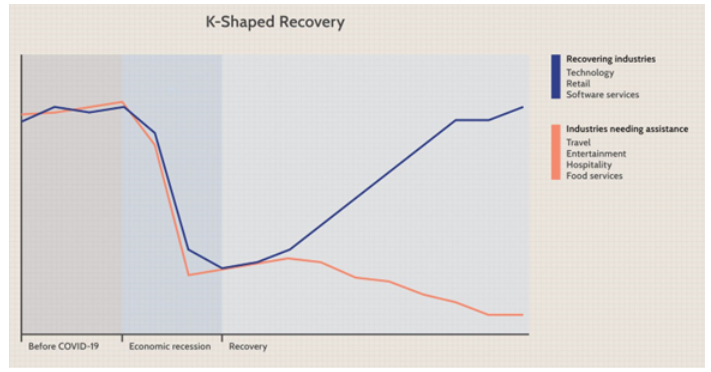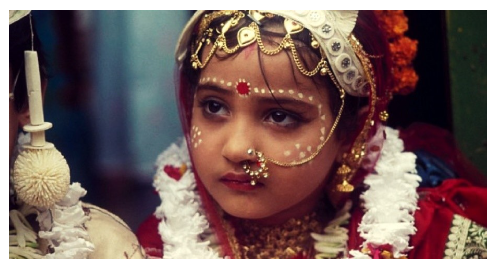Thursday, 11th January 2024
Hit-and-run law: concerns raised
In News: Protests by transporters in Maharashtra, Chhattisgarh, West Bengal, and Punjab highlight the controversy surrounding Section 106 (2) of the Bharatiya Nyaya Sanhita, 2023 (BNS).
Hit-and-Run Law Overview
- Legal Framework
- The hit-and-run provision is a component of the Bharatiya Nyaya Sanhita (BNS), slated to replace the outdated Indian Penal Code, 1860.
- Section 106 (2) of the BNS, 2023 outlines penalties for fleeing accident scenes without reporting to authorities.
- Penalties and Reporting
- Section 106 (2) prescribes penalties of up to 10 years in jail and fines for those not reporting accidents promptly.
- Immediate reporting falls under Section 106(1), with a maximum punishment of five years for causing death due to rash or negligent acts.
Context and Need
- The law responds to alarming road accident figures in India, with 1.68 lakh fatalities in 2022. The legislation aims to curb rash driving, emphasizing moral responsibility toward victims.
Principle Behind the Law
- Section 106 (2) intends to deter negligent driving, holding offenders accountable.
- It aligns with existing laws like Section 134 of the Motor Vehicles Act, 1988, promoting responsible post-accident actions.
Concerns Raised by Protesters
- Provisions of Section 106 (2)
- Transporters demand the withdrawal or modification of Section 106 (2), citing excessive penalties of up to 10 years imprisonment and a Rs. 7 lakh fine.
- Challenging Conditions
- Protesters argue penalties don't account for challenging work conditions, such as long hours and difficult roads, and fear of violence against drivers.
- Perceived Unfair Blame
- Drivers claim unfair blame for accidents and fear the law's punitive approach could negatively impact the transport industry.
- Possible Misuse by Authorities
- Concerns arise about potential law enforcement misuse and the overall detrimental impact on the transport sector due to harsh penalties.
- Unfair Treatment and Limited Categorization
- Protesters highlight unequal treatment, as exceptions for doctors exist under 106 (1), calling for fair penalties across sectors.
- Lack of Differentiation
- Criticism includes the absence of differentiation between rash and negligent driving, overlooking contributory factors affecting driver responsibility.
The Path Forward
- Stakeholder Consultations
- Encourage comprehensive discussions with stakeholders, especially drivers and transport associations, addressing concerns and obtaining diverse perspectives.
- Emergency Response Protocol
- Establish a standardized emergency response protocol, emphasizing prompt reporting without exposing drivers to potential violence.
- Differentiated Penalties
- Categorize the law based on accident outcomes and liabilities, ensuring punishments match the severity of the offense.
- Reporting Procedures and Evidence
- Clarify reporting procedures and evidence requirements, allowing drivers to prove innocence or present mitigating factors.
- Alternative Measures for Minor Offenses
- Differentiate minor injuries from criminal acts, imposing alternative measures like community service or driving retests.
- Infrastructure Improvement
- Invest in enhanced road infrastructure, visibility measures, and safety features to mitigate accidents and reduce hit-and-run incidents.
- International Best Practices
- Study and adopt successful models from other countries with effective hit-and-run legislation, adapting them to the Indian context.
Source: TH
Bilkis Bano Case: Remission Implications
In News: Supreme Court Rejects Gujarat Government's Remission for 2002 Riots Gangrape Convicts in Bilkis Bano Case.
Bilkis Bano Case Background
2002 Gujarat Riots and Tragedy
- During the 2002 Gujarat riots, Bilkis Bano, pregnant at the time, endured a brutal gangrape, while a mob killed seven of her family members, including her three-year-old daughter.
Legal Proceedings and Trial Shift
- Following extensive legal proceedings, the Central Bureau of Investigation (CBI) took over the case.
- In 2004, the Supreme Court moved the trial to Mumbai due to threats against Bilkis, directing the central government to appoint a special public prosecutor.
Justice in 2008
- In 2008, a Mumbai court convicted 11 individuals for the gangrape and murder, marking a significant step towards justice for Bilkis Bano.
Remission Controversy in 2022
- In August 2022, the Gujarat government granted remission to the 11 convicts, leading to their release. This decision sparked controversy and legal challenges.
Supreme Court’s Nullification
- Lack of Authority and Concealed Facts
- The Court ruled that the Gujarat government lacked the authority or jurisdiction to issue remission orders, emphasizing Section 432 of the CrPC.
- It noted the decision should be within the state where the convicts were sentenced.
- Criticism of Remission Process
- Serious flaws in the remission process were highlighted, stating that orders lacked proper consideration and were obtained through concealing facts, constituting fraud upon the court.
- Overreach and Unlawful Exercise of Power
- The Court criticized the Gujarat government's overreach, asserting it unlawfully exercised power belonging to the Maharashtra government.
- The convicts' plea to protect their liberty was rejected, and they were directed to surrender within two weeks.
Understanding Remission
- Definition and Distinction
- Remission is the complete ending of a sentence at a reduced point, distinct from furlough and parole.
- Constitutional Provisions
- Article 72 (President) and Article 161 (Governor) provide sovereign powers of pardon, reprieve, respites, or remissions.
- Statutory Power of Remission
- Under Section 432 of the CrPC, the 'appropriate government' may suspend or remit a sentence, in whole or in part, with or without conditions.
Landmark Cases of Remission
- Laxman Naskar v. State of West Bengal (2000)
- Factors governing remission include the individual nature of the crime, chance of recurrence, loss of potentiality, and socio-economic conditions.
- Epuru Sudhakar v. State of AP (2006)
- Judicial review of remission orders is available on grounds like non-application of mind, mala fide intentions, consideration of irrelevant factors, and arbitrariness.
Source: IE
Antimicrobial Resistance - Edukemy Current Affairs
In News: Over half of the surveyed hospital patients, nearly 10,000 in total, received antibiotics for preventing infections rather than treating them, raising concerns about antibiotic resistance.
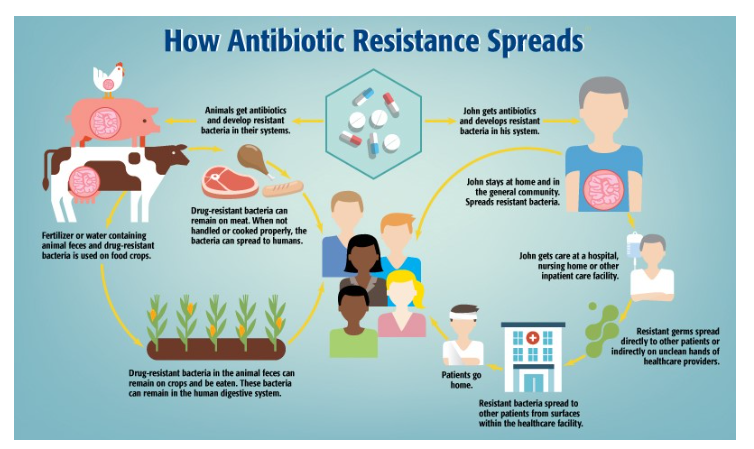
Key Survey Findings
- Preventative Use of Antibiotics
- 55% of surveyed patients received antibiotics for preventive reasons.
- 45% were prescribed antibiotics for therapeutic purposes.
- Antibiotic Prescription Patterns
- Only 6% of patients received antibiotics after a confirmed diagnosis (definitive therapy).
- 94% were on empirical therapy, based on clinical assessment.
- Lack of Specific Diagnosis
- 94% received antibiotics before a definitive diagnosis, indicating widespread use without precise knowledge.
- Variation Among Hospitals
- Antibiotic prescription rates varied widely among hospitals (37% to 100%).
- 86.5% of prescribed antibiotics were administered parenterally.
- Drivers of AMR
- Excessive and inappropriate antibiotic use identified as a major driver of antimicrobial resistance (AMR).
Understanding Antimicrobial Resistance (AMR)
- Definition and Impact
- AMR is acquired resistance by microorganisms against antimicrobial drugs.
- Renders standard treatments ineffective, leading to prolonged illnesses and increased mortality rates.
Reasons for AMR Spread
- High Prevalence of Communicable Diseases
- High burden of communicable diseases requiring antimicrobial treatment.
- Overburdened Public Health System
- Limited laboratory capacity for diagnosis in an overburdened public health system.
- Poor Infection Control Practices
- Hygiene lapses in hospitals facilitate the spread of resistant bacteria.
- Injudicious Use
- Overprescribing, incomplete courses, and unnecessary broad-spectrum antibiotics create selective pressure for resistance.
- Easy Access
- Unregulated over-the-counter availability and affordability fuel self-medication and inappropriate use.
- Lack of Awareness
- Low public understanding of AMR and proper antibiotic use encourages misuse.
- Limited Surveillance
- Inadequate monitoring systems make tracking and understanding the scope of AMR challenging.
Implications of AMR Spread
- Healthcare Impact
- Renders previously effective antibiotics ineffective, complicating treatment and increasing mortality rates.
- Increased Healthcare Costs
- More expensive and prolonged therapies lead to higher healthcare costs.
- Challenges in Medical Procedures
- Makes medical procedures riskier due to increased infection risk.
- Limitations in Treatment Options
- Diminishing effective antibiotics may lead to untreatable infections, resembling a pre-antibiotic era.
Measures Taken to Address AMR
- Indian Initiatives
- National Programme on AMR Containment
- Launched in 2012, focusing on a One Health approach.
- Strengthened AMR Surveillance Network with labs in State Medical Colleges.
- National Programme on AMR Containment
- National Action Plan on AMR
- Launched in April 2017, emphasizing stakeholder involvement.
- AMR Surveillance and Research Network (AMRSN)
- Launched in 2013 to capture trends and patterns of drug-resistant infections.
- Antibiotic Stewardship Program
- Initiated by ICMR for controlling antibiotic misuse in hospitals.
- Global Measures
- World Antimicrobial Awareness Week (WAAW)
- Held annually since 2015 to raise global awareness of AMR.
- Global Antimicrobial Resistance and Use Surveillance System (GLASS)
- Launched by WHO in 2015 to inform strategies at all levels.
- Global Point Prevalence Survey Methodology
- Introduced by WHO to understand prescribing patterns in hospitals.
- World Antimicrobial Awareness Week (WAAW)
Way Forward
- Public Education Campaigns
- Inform the public about AMR dangers and prevention through mass media and community outreach.
- Antibiotic Stewardship Programs
- Implement programs in hospitals to optimize antibiotic use.
- Regulation of Antibiotic Sales
- Enforce stricter regulations on over-the-counter antibiotic sales.
- Expand AMR Surveillance
- Establish a nationwide surveillance system to track resistant bacteria.
- Develop New Technologies
- Explore new technologies, such as phage therapy, to address AMR challenges.
|
UPSC Previous Year Questions Prelims (2019) Q. Which of the following are the reasons for the occurrence of multi-drug resistance in microbial pathogens in India?
Select the correct answer using the code given below. (a) 1 and 2 Ans: (b) Mains (2014) Q. Can overuse and free availability of antibiotics without Doctor’s prescription, be contributors to the emergence of drug-resistant diseases in India? What are the available mechanisms for monitoring and control? Critically discuss the various issues involved. |
Source: TH
Debt Sustainability and Exchange Rate Management
In News: The International Monetary Fund (IMF) has issued its yearly Article IV consultation report on India, focusing on key issues such as the country's debt sustainability and management of exchange rates.
IMF's Economic Outlook for India
- Debt Sustainability Concerns
- IMF expresses worry about India's long-term debt sustainability.
- Projections indicate general government debt could reach 100% of GDP by 2028.
- Challenges in Debt Management
- Prudent debt management practices emphasized by the IMF.
- Urgent need for financing to achieve climate goals and enhance resilience against disasters.
- Debunking IMF's Projections
- Indian Finance Ministry disputes IMF's debt projections.
- Considers them a worst-case scenario, not an imminent reality.
- Exchange Rate Dynamics
- India's exchange rate regime reclassified to "stabilized arrangement."
- Reflects controlled fluctuations in the rupee's value due to RBI interventions.
- Stagnant Credit Ratings
- Despite fast economic growth, India's credit ratings remain unchanged.
- Agencies cite concerns about fiscal performance, burdensome debt, and low per capita income.
India's Current Debt Scenario
- Government Debt Levels
- Central government debt at ₹155.6 trillion, around 57.1% of GDP by March 2023.
- State governments hold approximately 28% of GDP in debt.
- Public Debt-to-GDP Ratio
- Finance Ministry reports India's public debt-to-GDP ratio at 81% in 2022-23.
- Exceeds FRBM Act targets of 40% for the Centre, 20% for States, and 60% combined.
- Factors Driving Rising Debt
- High fiscal deficit driven by expenditure commitments and slow revenue growth.
- Global geopolitical events, informal economy challenges, guarantees, contingencies, and exchange rate fluctuations contribute.
Legislation for Debt Management
- Fiscal Responsibility and Budget Management Act (FRBM Act)
- Enacted in 2003 to bring financial discipline.
- Specifies debt-GDP targets for Centre, States, and their combined accounts.
- Pandemic disruptions contribute to challenges in meeting FRBM Act targets.
Measures for Sustainable Debt Management
- Short-Term Strategies
- Fiscal Consolidation
- Streamlining subsidies, reforming public sector enterprises, and strict adherence to FRBM Act.
- Improving tax efficiency through strengthened tax administration and tackling evasion.
- Fiscal Consolidation
- Long-Term Growth-Oriented Approaches
- Investing in Human Capital
- Skill development and education programs to enhance productivity and competitiveness.
- Higher economic growth and improved tax collection.
- Export Promotion
- Diversifying export markets, incentivizing high-value exports, and addressing competitiveness challenges.
- Boosting foreign exchange earnings to reduce reliance on external debt.
- Investing in Human Capital
|
UPSC Previous Year Questions Prelims (2018) Q. Consider the following statements:
Which of the statements given above is/are correct? (a) 1 only Ans: C Mains (2019) Q. Public expenditure management is a challenge to the Government of India in the context of budget-making during the post-liberalization period. Clarify it. |
Source: TH
INS Kabra
In News: The Indian warship, INS Kabra, an indigenous fast attack craft, has arrived at the Colombo port, signaling a step toward strengthening bilateral ties between India and Sri Lanka.
Name and Origin
- INS Kabra is a naval vessel named after an island in the Andaman and Nicobar archipelago.
- It belongs to the Car Nicobar class, crafted by Garden Reach Shipbuilders and Engineers (GRSE) for the Indian Navy.
Series and Design
- It is the eighth vessel among the 10 Fast Attack Crafts in the Car Nicobar class.
- Designed as a cost-effective platform for patrol, anti-piracy, and rescue operations within India's Exclusive Economic Zone.
Naming Convention
- The class and its vessels are named after Indian islands.
- They represent the first water jet-propelled vessels in the Indian Navy.
Performance Characteristics
- With a top speed exceeding 35 knots, INS Kabra offers excellent manoeuvrability through water-jet propulsion.
- Ideal for high-speed interdiction of fast-moving targets.
Compliance and Regulations
- Adheres to the latest regulations of the International Maritime Organisation for sea compliance and pollution control.
Source: BS
Drishti 10 'Starliner'
In News: The Chief of Naval Staff has officially launched the inaugural indigenous Drishti 10 'Starliner' Unmanned Aerial Vehicle (UAV) for the Navy.

- Name and Origin
- Drishti 10 'Starliner' is an indigenous Unmanned Aerial Vehicle (UAV) developed by Adani Defence and Aerospace.
- Capabilities
- An advanced intelligence, surveillance, and reconnaissance (ISR) platform with a 36-hour endurance and a 450 kg payload capacity.
- Weather and Airspace Clearance
- An all-weather military platform with clearance to operate in both segregated and unsegregated airspace.
- Strategic Significance
- Designed to enhance India’s naval capabilities with high endurance, combat-proven features, and advanced capabilities.
- Autonomous Operation
- The UAV's autonomous nature, combined with its mission effectiveness and flexible payload configuration options, makes it invaluable for strategic operations.
- Maintenance Efficiency
- Notable for minimal maintenance requirements, ensuring cost-effectiveness and operational efficiency.
- Enhances operational readiness, minimizes downtime, and maximizes deployment opportunities.
Communication Systems
- Equipped with advanced communication systems, including satellite communication and Line-of-Sight (LOS) data links, ensuring reliable and secure data transmission.
Source: NDTV
Prasadam
In News: The Union Minister for Health & Family Welfare has inaugurated 'Prasadam,' the nation's inaugural healthy and hygienic food street, located at Neelkanth Van, Mahakal Lok, in Ujjain, Madhya Pradesh.
About Prasadam
- Prasadam is India's first "Healthy and Hygienic Food Street" located at Neelkanth Van, Mahakal Lok, Ujjain, Madhya Pradesh.
- The food street aims to connect people across the country with pure and safe local and traditional food.
- Spanning 939 square meters and featuring 19 shops, Prasadam caters to the 1-1.5 lakh devotees who visit the Mahakaleshwar Temple daily.
- The facility offers various amenities, including a kids' play area, drinking water facility, CCTV surveillance, parking, public conveniences, and seating spaces.
Mahakaleshwar Temple
- Mahakaleshwar Temple is a Hindu temple dedicated to Lord Shiva, situated in the ancient city of Ujjain, Madhya Pradesh.
- The temple, located beside the Rudra Sagar Lake, is one of the twelve Jyotirlingams of Lord Shiva.
- The Mahakaleshwar idol faces south, unlike other Jyotirlingas, and the temple complex showcases a blend of Chalukya, Maratha, and Bhumija architectural styles.
- The temple attracts a large number of devotees during the Maha Shivaratri festival, featuring lingam sculptures of Mahakaleshwar and images of Ganesh, Parvati, and Karttikeya.
Source: HW
Pravasi Bharatiya Diwas (PBD)
In News: The Prime Minister of India recently conveyed his greetings on the occasion of Pravasi Bharatiya Diwas.
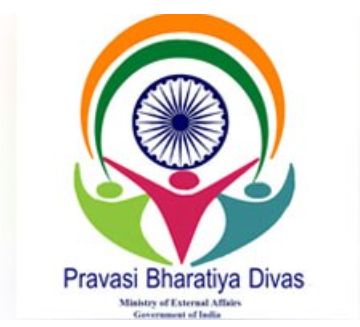
About Pravasi Bharatiya Diwas
- Name-Pravasi Bharatiya Diwas (PBD), also known as Non-Resident Indian (NRI) Day
- Date-January 9
- Purpose-To recognize and celebrate the contributions and achievements of the overseas Indian community in India's development
- Organizer-Ministry of External Affairs
- Significance-Commemorates Mahatma Gandhi's return from South Africa in 1915, a pivotal figure in India's freedom struggle
- Inception-First celebrated in 2003
- Frequency Change-Originally an annual event, the format was revised in 2015 to be celebrated once every two years
- Connection and Engagement-Serves as a platform to connect the Indian diaspora with their roots and encourages continued engagement with India's progress
- Showcasing Diversity-Held in different cities to showcase the diversity and progress of various regions of India
- Conventions Held-17 conventions held to date
- Latest Convention-The last Pravasi Bharatiya Divas was celebrated in Indore, Madhya Pradesh, in 2023.
Source: PIB
Biligiri Rangaswamy Temple (BRT) Tiger Reserve
In News: The Karnataka Forest Department has initiated the collection of a green tax, imposing a fee of Rs 10 for two-wheelers and Rs 20 for four-wheelers entering BR Hills via the BRT Tiger Reserve.
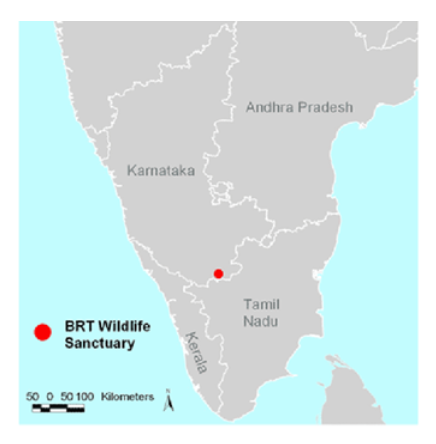
About Biligiri Rangaswamy Temple (BRT) Tiger Reserve
- Location-Situated in the Chamarajanagar district of Karnataka State.
- Name Derivation-The reserve is named after the 'BILIGIRI,' a white rocky cliff housing the Lord 'VISHNU' temple, locally known as ‘Rangaswamy.’
- Bio-geographical Entity-Positioned between the Western Ghats and the Eastern Ghats, constituting a unique bio-geographical entity in South India.
- Establishment-Initially declared a Wildlife Sanctuary in 1974, it attained Tiger Reserve status in 2011.
- Total Area-Encompasses a total area of 574.82 square kilometers.
- Vegetation-Primarily features dry deciduous forests with interspersed moist deciduous, semi-evergreen, evergreen, and shola patches at varying altitudes.
- Flora-Major plant species include Anogeissus latifolia, Dalbergia paniculata, Grewia teliaefolia, Terminalia alata, Terminalia bellirica, Terminalia paniculata, etc.
- Fauna-Rich biodiversity comprising animals like tiger, elephant, leopard, wild dog, bison, sambar, spotted deer, barking deer, four-horned antelope, sloth bear, wild boar, common langur, bonnet macaque, along with various reptiles and bird species.
Source: TOI
Eucalyptus Snout Beetle
In News: Researchers have discovered a natural solution to safeguard eucalyptus forest plantations from the eucalyptus snout beetle, a pest notorious for causing significant harm to eucalyptus trees.

About Eucalyptus Snout Beetle
- Eucalyptus Snout Beetle, also known as the eucalyptus weevil, is a leaf-feeding beetle recognized as a significant defoliator of eucalypts.
- Indigenous to Australia, this pest is found in several countries worldwide where eucalypts are cultivated.
- Feeding on leaves, buds, and shoots, the beetle causes stunted growth, defoliation, and substantial losses.
- Its extensive flight capability enables it to cause damage over large areas, often spreading through the transport of forest products.
- The primary method of control involves the use of microwasps Anaphes spp, which can be a costly solution.
- In response, a team of scientists has explored the use of naturally occurring pathogenic fungi as an alternative approach to address this issue.
Source: DTE
After ECI Guidelines, Charting a Path to Disability Inclusion in Politics
In News: Recently, the Election Commission of India issued a vital advisory, urging political parties to embrace terminologies that are sensitive to disability.
An Overview of the Rights of Persons with Disabilities (PwD) Act, 2016
- An Important Legislation for PwD
- The Act serves as crucial legislation, intending to safeguard and improve the rights and entitlements of persons with disabilities, replacing the 1995 Act.
- It signifies a substantial stride toward promoting their rights and inclusion.
- Definition of Disabilities
- Recognizing various disabilities like physical, intellectual, mental, and sensory, the Act lays the foundation for protecting the rights of individuals across diverse impairments.
- Rights and Entitlements
- Outlining the rights and entitlements, including equality, non-discrimination, and full participation in society, the Act emphasizes creating an inclusive environment.
- Education
- Ensuring free education up to 18 years and advocating for inclusive education, the Act aims to provide equal learning opportunities.
- Employment
- Promoting equal employment opportunities, the Act prohibits discrimination and mandates job reservations for persons with disabilities.
- Reservation in Higher Education
- The Act provides for reserved seats in higher education institutions, fostering educational inclusivity.
- Special Employment Exchanges
- Calling for special employment exchanges, the Act facilitates employment opportunities for persons with disabilities.
- Accessibility
- Emphasizing barrier-free access in public spaces, transportation, and technology, the Act advocates for enhanced accessibility.
- Healthcare
- Ensuring access to affordable and quality healthcare services for persons with disabilities is a key focus of the Act.
- Legal Capacity
- Recognizing their right to equal recognition before the law, the Act supports the decision-making capacity of persons with disabilities.
- Social Security
- Promoting social security measures, the Act advocates for the welfare of persons with disabilities.
- National and State Advisory Boards
- Constituting National and State Advisory Boards, the Act ensures oversight for effective implementation.
- Offenses and Penalties
- Prescribing penalties for offenses against persons with disabilities, the Act ensures accessible legal proceedings.
Key Aspects of ECI’s Disability-Inclusive Communication Guidelines
- Banning Ill-Health Terminologies
- The guidelines stress refraining from ill-health terminologies to avoid stigmatization or marginalization of individuals with disabilities.
- Dehumanization and Stereotype Prevention
- The guidelines discourage dehumanizing portrayals and perpetuation of stereotypes, addressing attitudinal barriers identified under the 2016 Act.
- Legal Implications
- Recognizing legal implications, breaches of communication guidelines may subject political parties to action under section 92 of the 2016 Act.
Ways to Make ECI’s Guidelines More Effective
- Need for Uniform Mandate
- A uniform mandate, using consistent and mandatory language across guidelines, is essential for a stronger impact.
- Incorporation into Model Code of Conduct (MCC)
- Inclusion of guidelines within the MCC will reinforce their significance and enforceability.
- Address the Ambiguity in Phraseology
- Clarifying ambiguous phraseology, particularly regarding specific terms, will enhance guideline effectiveness.
- Incorporation of a Chapter on Political Inclusion in the National Policy
- Adding a chapter on political inclusion in the national policy aligns with the UN Convention on the Rights of Persons with Disabilities.
- Creation of a Database on Legislators with Disabilities
- Establishing a database on legislators with disabilities and including a disability column in nomination forms addresses data gaps for political inclusion.
Conclusion
- Fostering Inclusivity
- ECI’s advisory on disability-sensitive guidelines is pivotal for inclusivity but requires enhancements for comprehensive effectiveness.
- Enhancements Needed
- Consistent language, MCC inclusion, comprehensive national policies, and data incorporation are vital for empowering persons with disabilities in the political landscape.
- Empowering Persons with Disabilities
- Addressing these aspects will pave the way for a more inclusive political landscape that respects and empowers persons with disabilities.
Source: IE
Share the article
Edukemy’s Current Affairs Quiz is published with multiple choice questions for UPSC exams
MCQ
Get Latest Updates on Offers, Event dates, and free Mentorship sessions.

Get in touch with our Expert Academic Counsellors 👋
FAQs
UPSC Daily Current Affairs focuses on learning current events on a daily basis. An aspirant needs to study regular and updated information about current events, news, and relevant topics that are important for UPSC aspirants. It covers national and international affairs, government policies, socio-economic issues, science and technology advancements, and more.
UPSC Daily Current Affairs provides aspirants with a concise and comprehensive overview of the latest happenings and developments across various fields. It helps aspirants stay updated with current affairs and provides them with valuable insights and analysis, which are essential for answering questions in the UPSC examinations. It enhances their knowledge, analytical skills, and ability to connect current affairs with the UPSC syllabus.
UPSC Daily Current Affairs covers a wide range of topics, including politics, economics, science and technology, environment, social issues, governance, international relations, and more. It offers news summaries, in-depth analyses, editorials, opinion pieces, and relevant study materials. It also provides practice questions and quizzes to help aspirants test their understanding of current affairs.
Edukemy's UPSC Daily Current Affairs can be accessed through:
- UPSC Daily Current Affairs can be accessed through Current Affairs tab at the top of the Main Page of Edukemy.
- Edukemy Mobile app: The Daily Current Affairs can also be access through Edukemy Mobile App.
- Social media: Follow Edukemy’s official social media accounts or pages that provide UPSC Daily Current Affairs updates, including Facebook, Twitter, or Telegram channels.

